San Gabriele dell'Addolorata's shrine, Isola del Gran Sasso D'Italia, Wednesday 10:59 am.
These images are the photographic documentation of churches built after Vatican Council II (1962-1965), they want to reach a synthesis, they therefore depict the church as an architectural and human place: indispensable elements of the concept of church that the New Testament defines as "god's building."
Santo Spirito's church, Napoli, Sunday 9:39 am.
Taranto's cathedral; Taranto; Friday 5:02 pm.
The church, therefore, is not intended as a building but as a space made up of people of flesh and bone, of "human material" or - as Saint Paul continues - of "living stones".
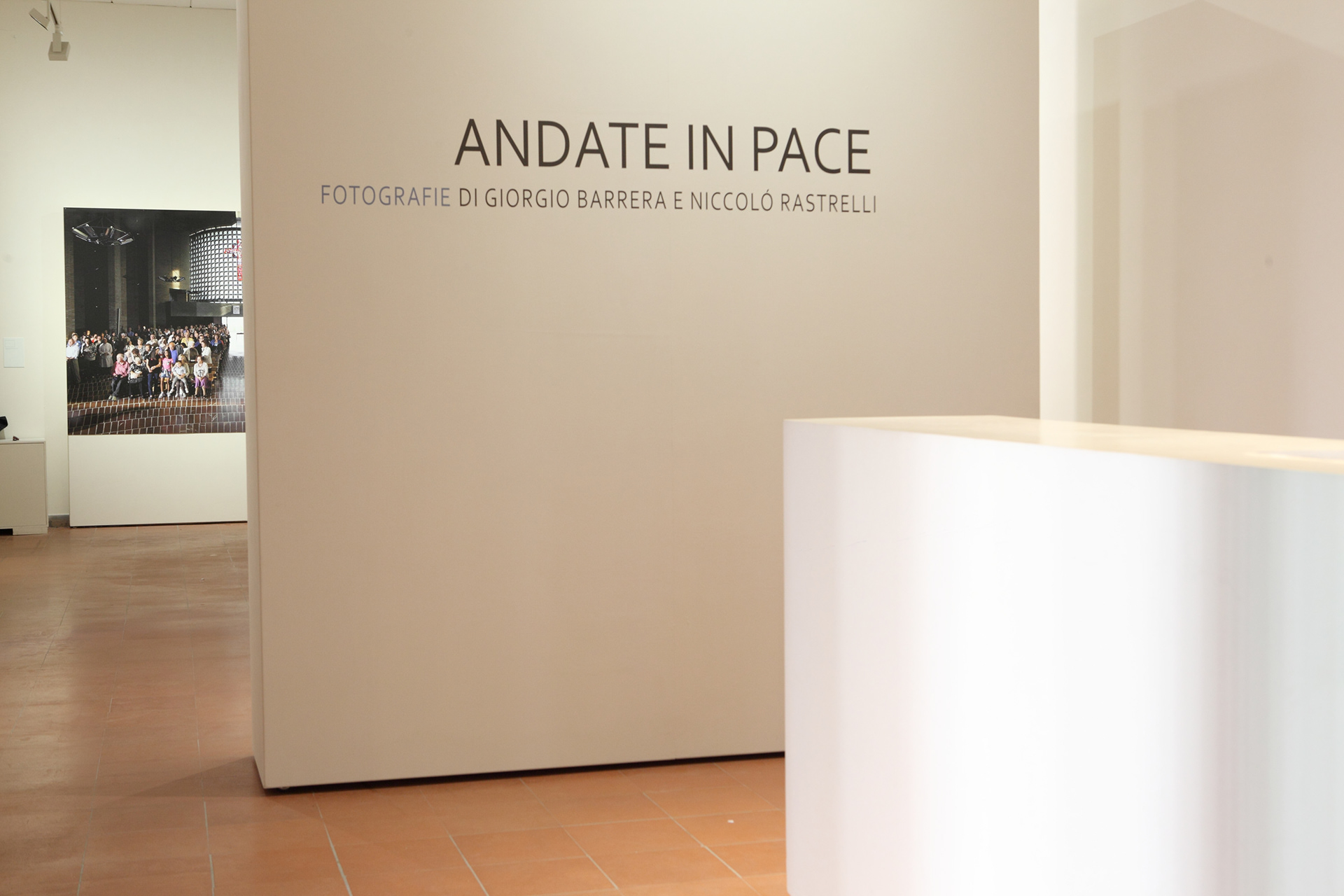
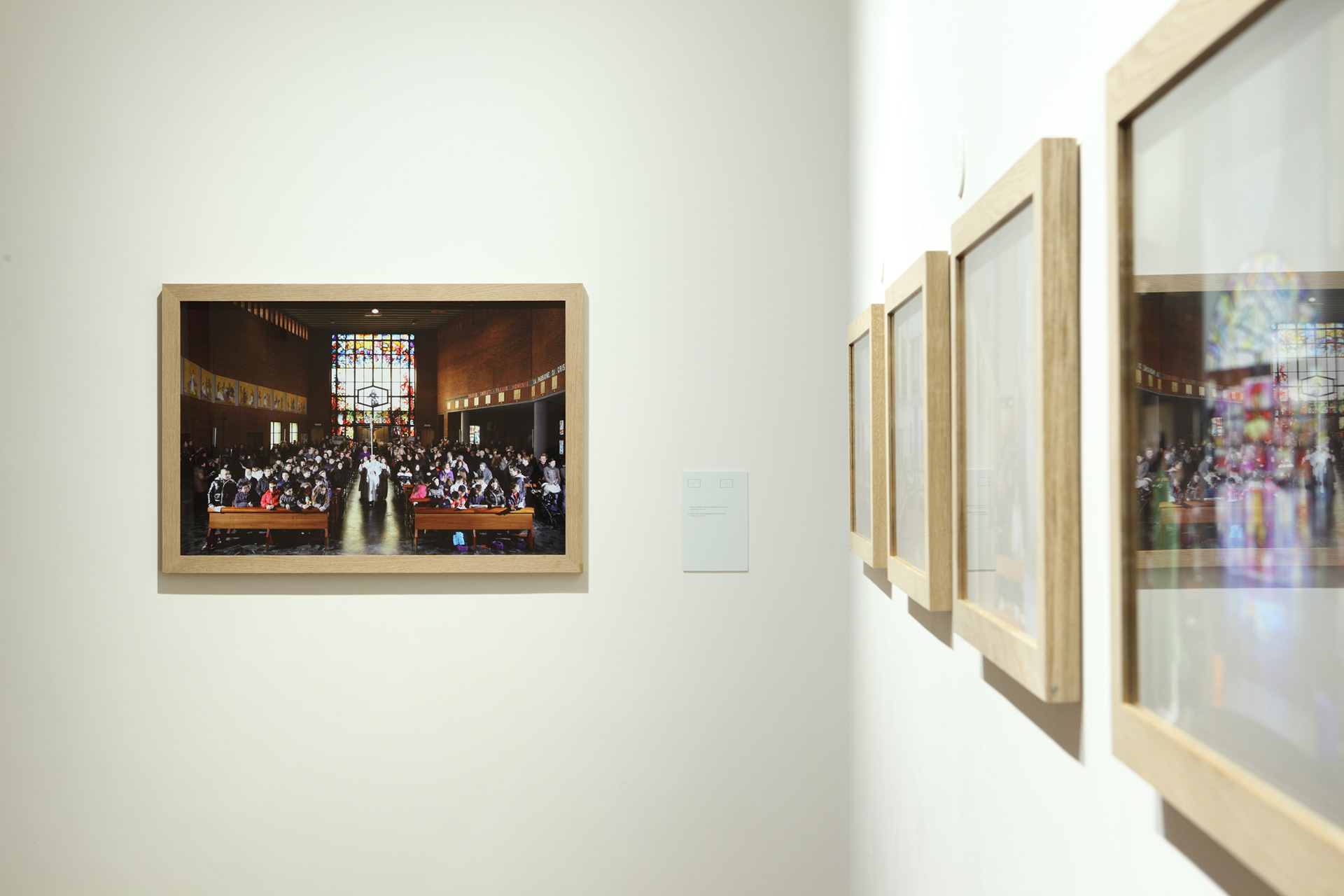
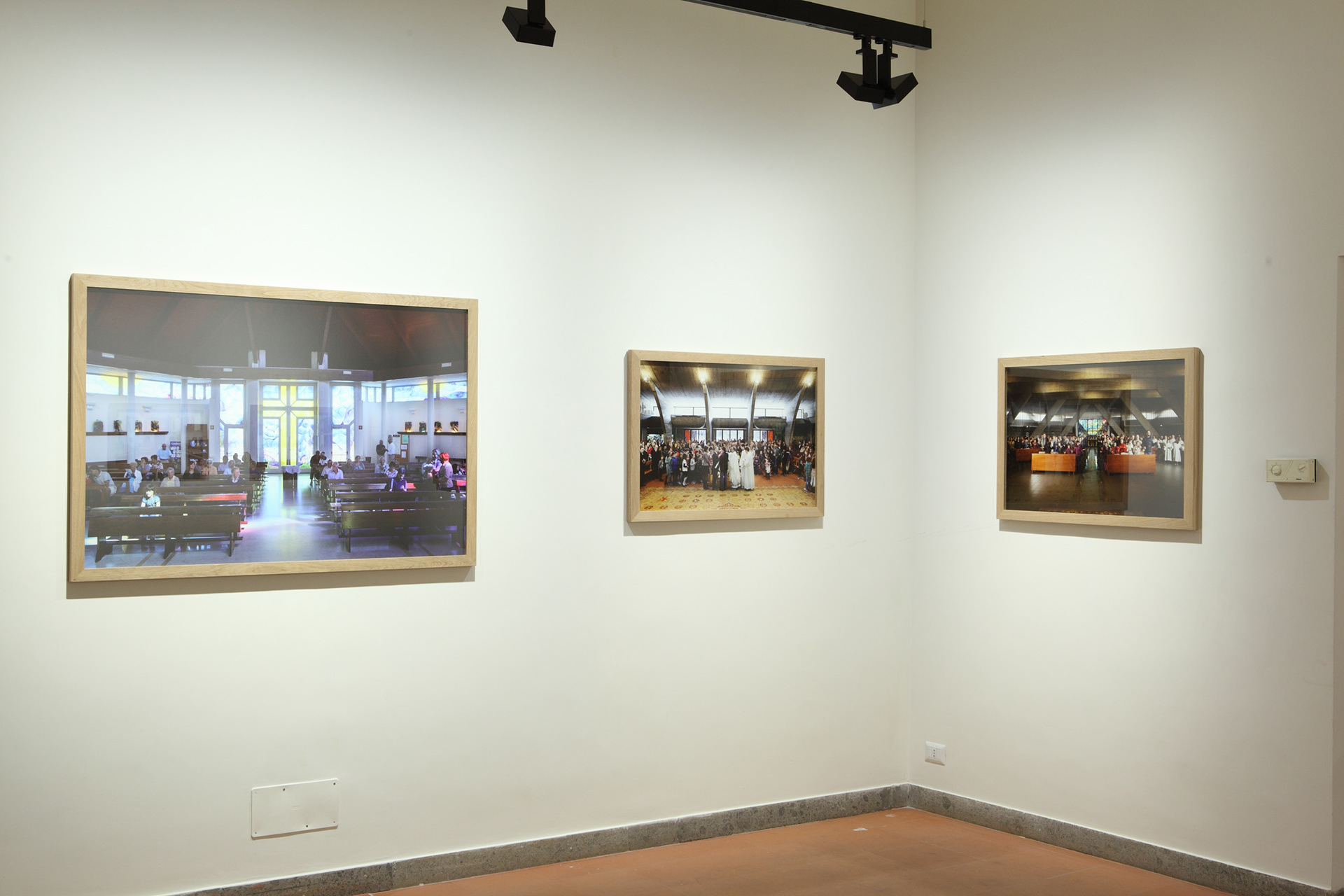
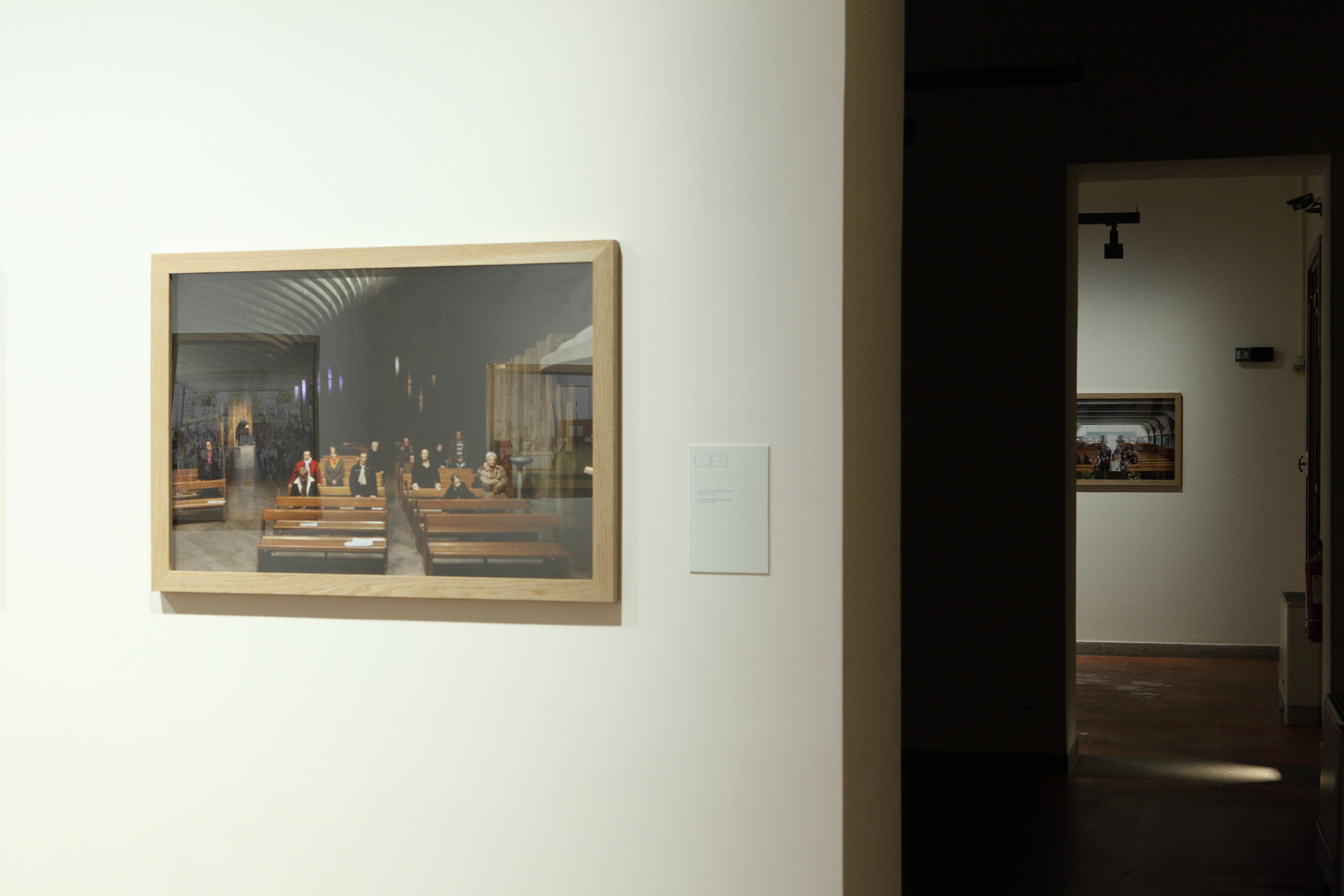
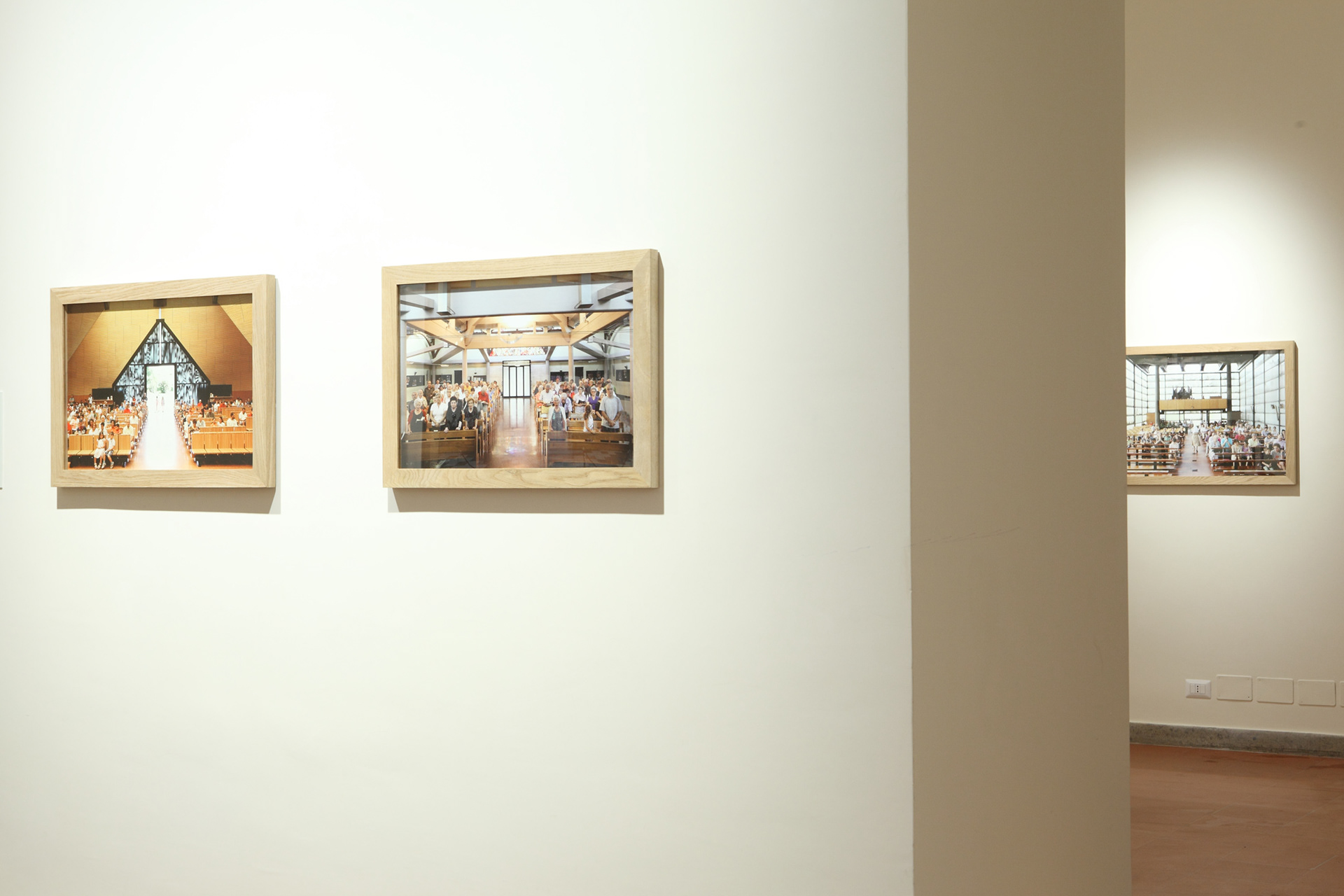
ICCD's show, Roma, 2014
The book of "Andate in pace"
Post-Conciliar churches structure of the chancel was completely revolutionized.
This change led to a shift of the priest, no longer turned towards the tabernacle and the crucifix but to the churchgoers (versus populum), to "make the bridge" between what is spiritual and what is earthly.
This change led to a shift of the priest, no longer turned towards the tabernacle and the crucifix but to the churchgoers (versus populum), to "make the bridge" between what is spiritual and what is earthly.
San Nicolao della Fluè's church, Milano, Sunday 11:02 am.
San Paolo's church, Foligno, Sunday 11:08 am.
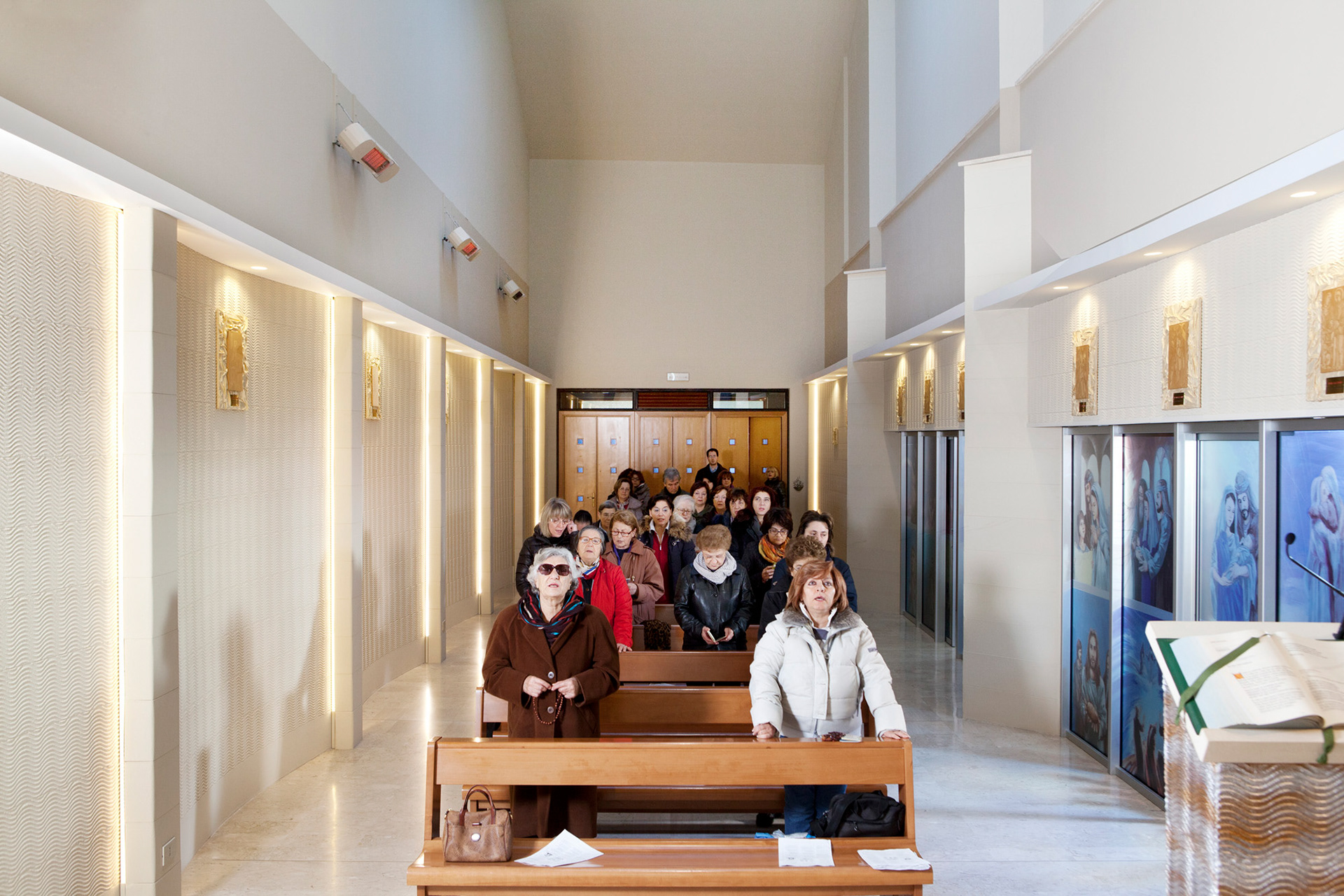
Santa Cecilia's Church, Potenza, Sunday 9:38 am.
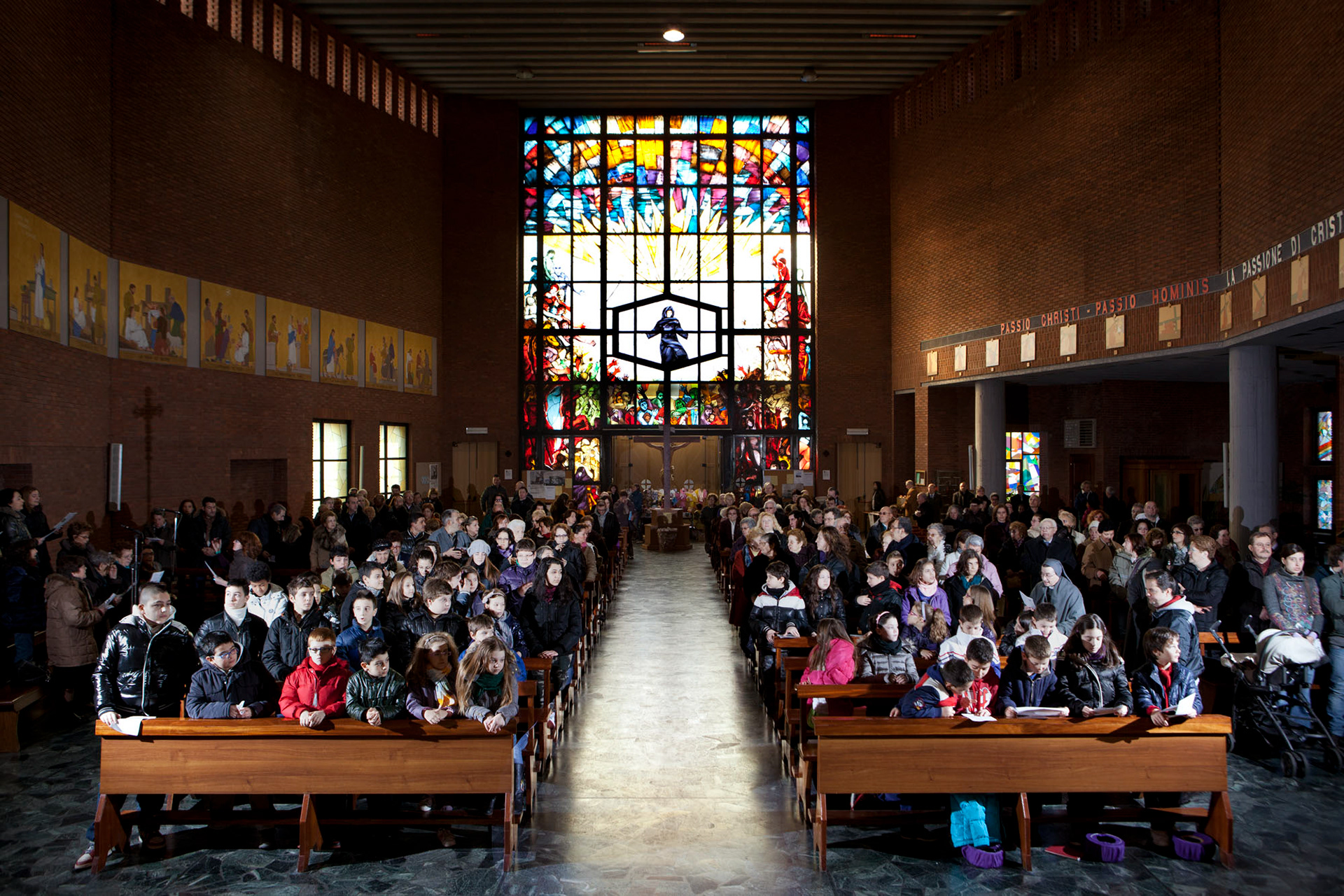
Santa Famiglia di Nazareth's chirch, Torino, Sunday 12:05 am.
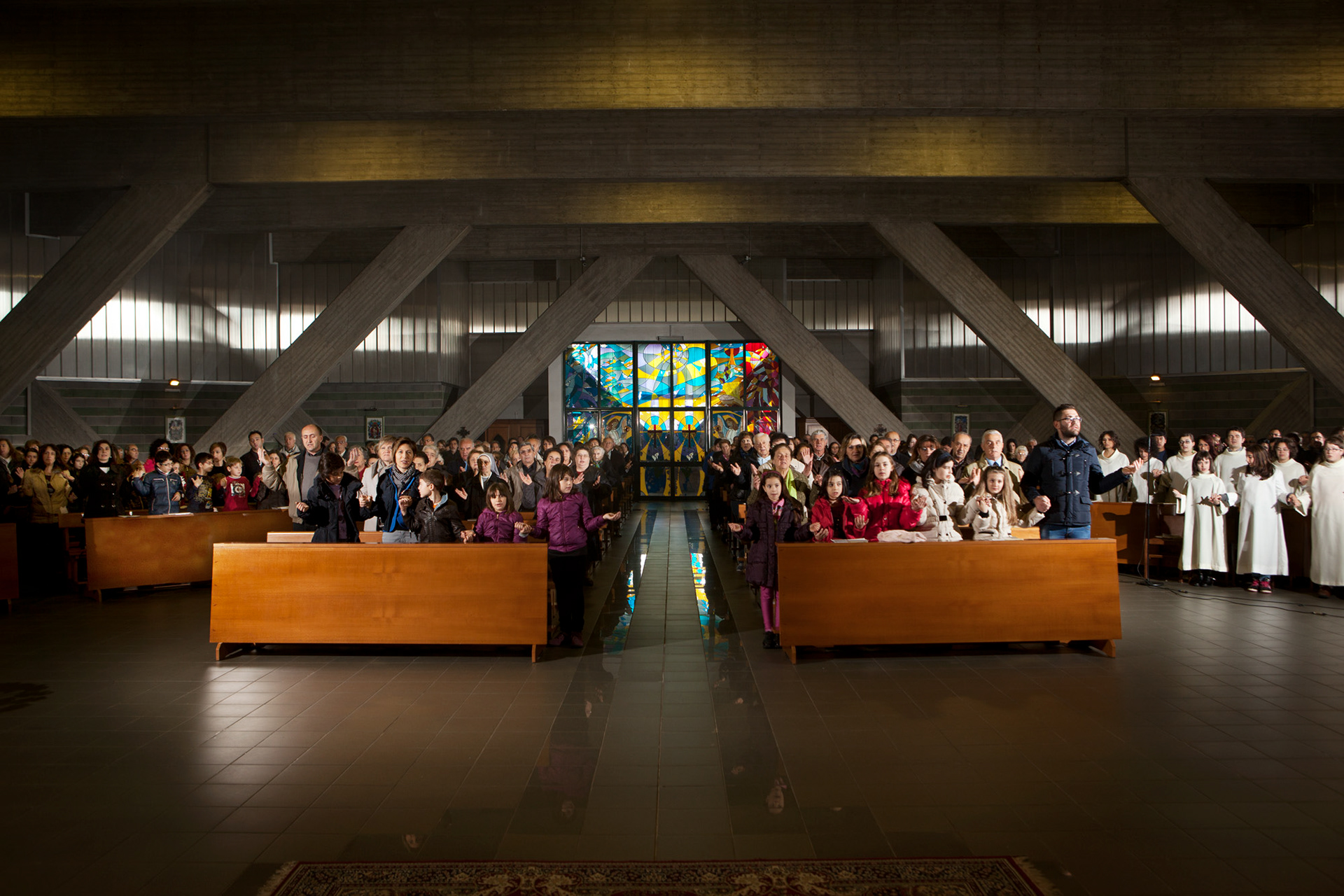
Maria Santissima Immacolata's Church, Potenza, Sunday 11:50 am.
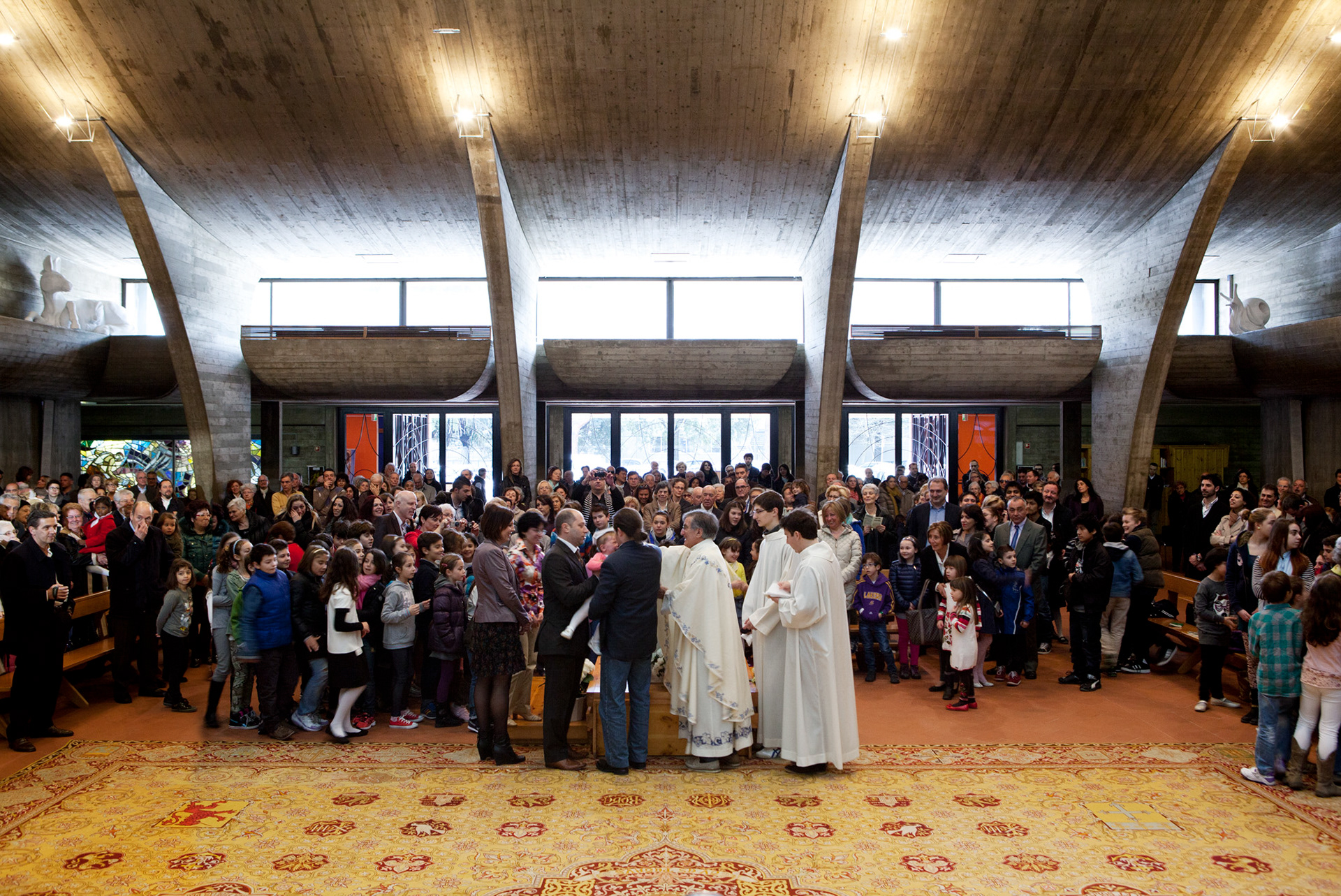
Corpus Domini's church, Firenze, Sunday 10:30 am.
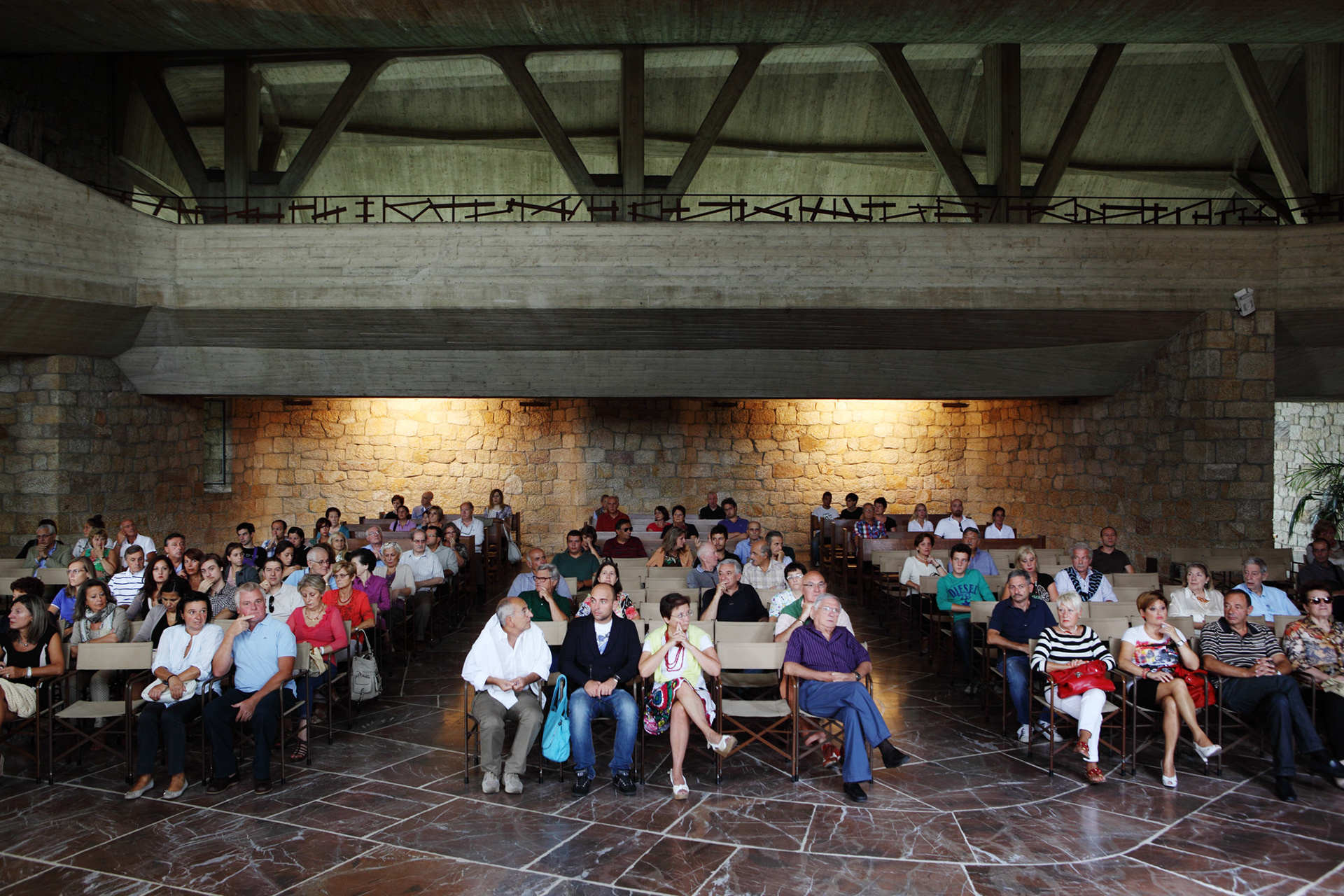
San Giovanni Battista's church, Firenze, Sunday 11:59 am.
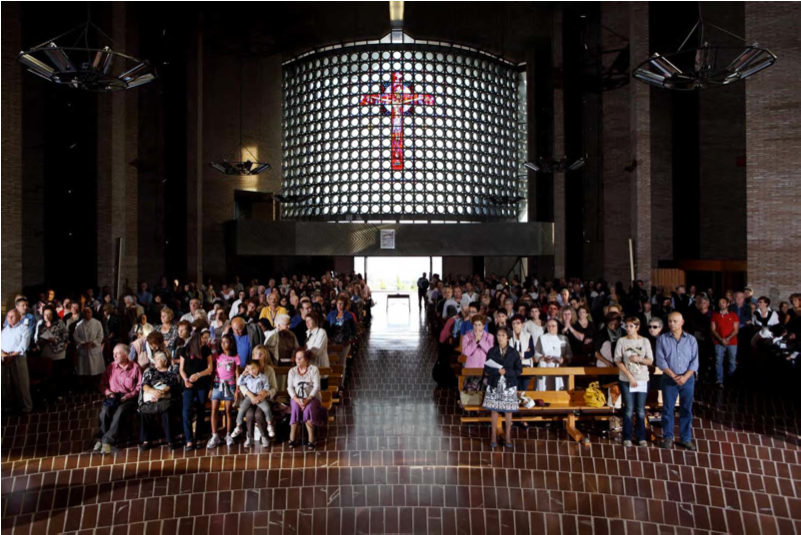
Amore Misericordioso's church, Collevalenza, Saturday, 17:37 pm.
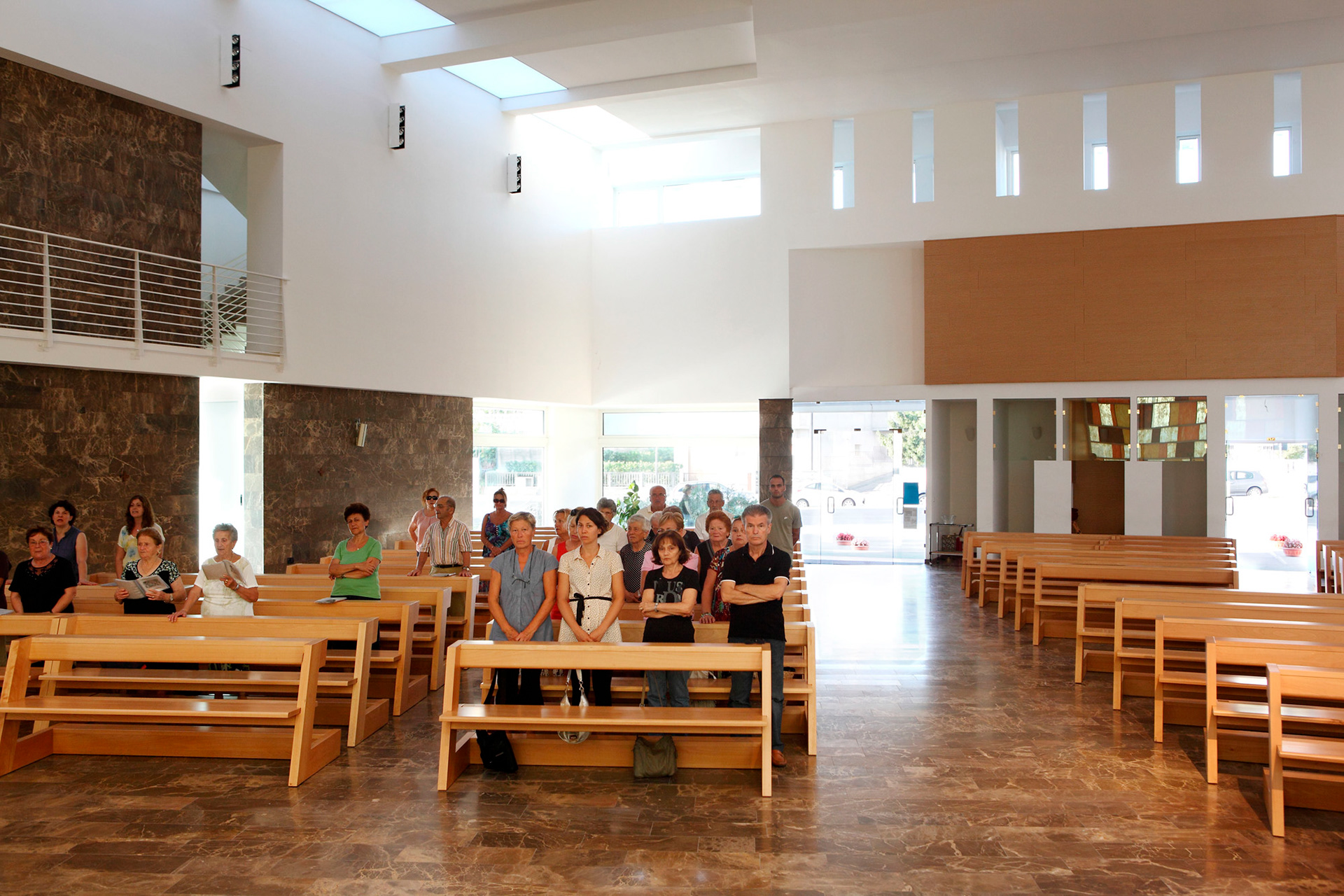
Santo Abbate's church, Pescara, Thursday 6:33 pm.
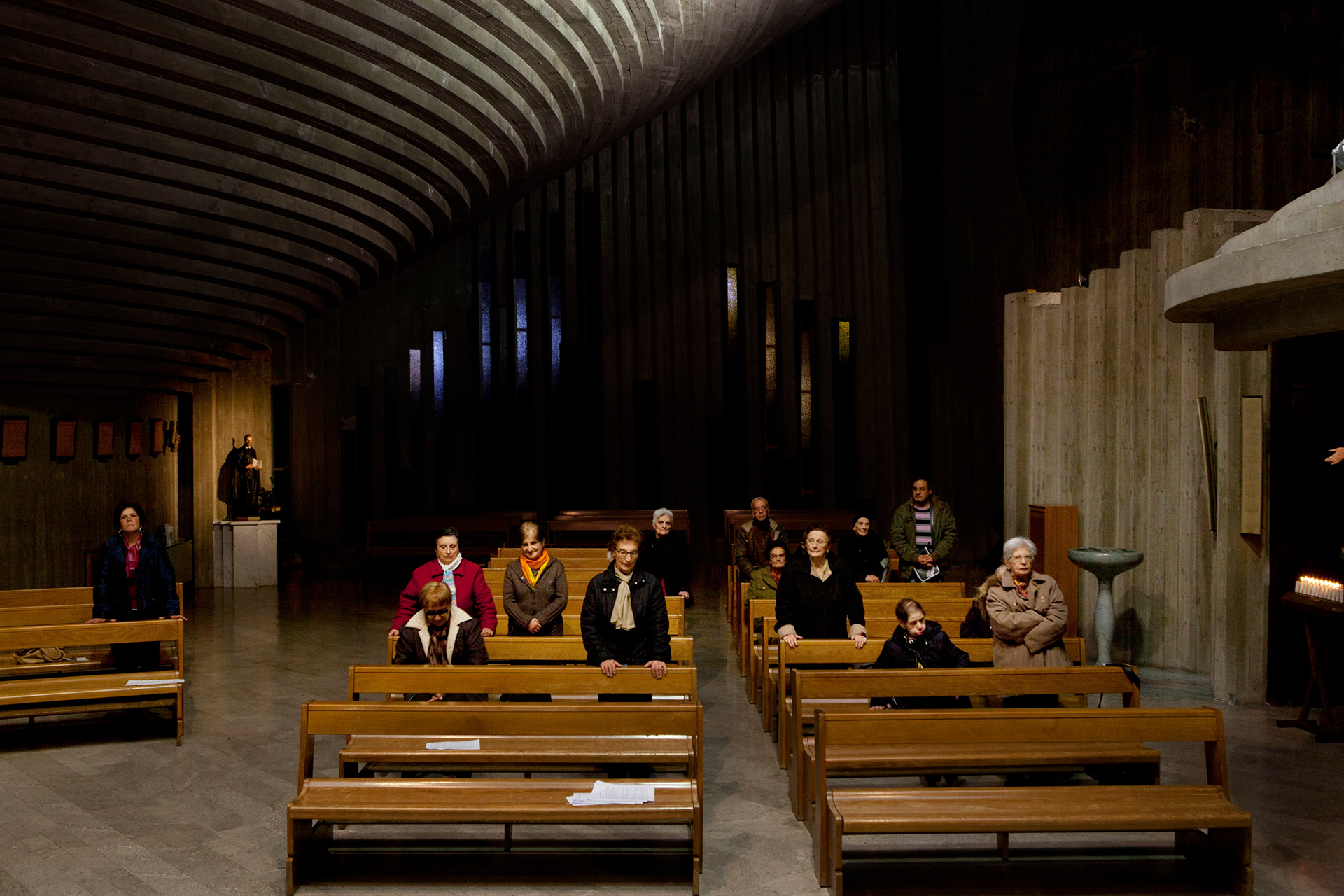
Sacra Famiglia's church, Salerno, Thursday 7:00 pm.
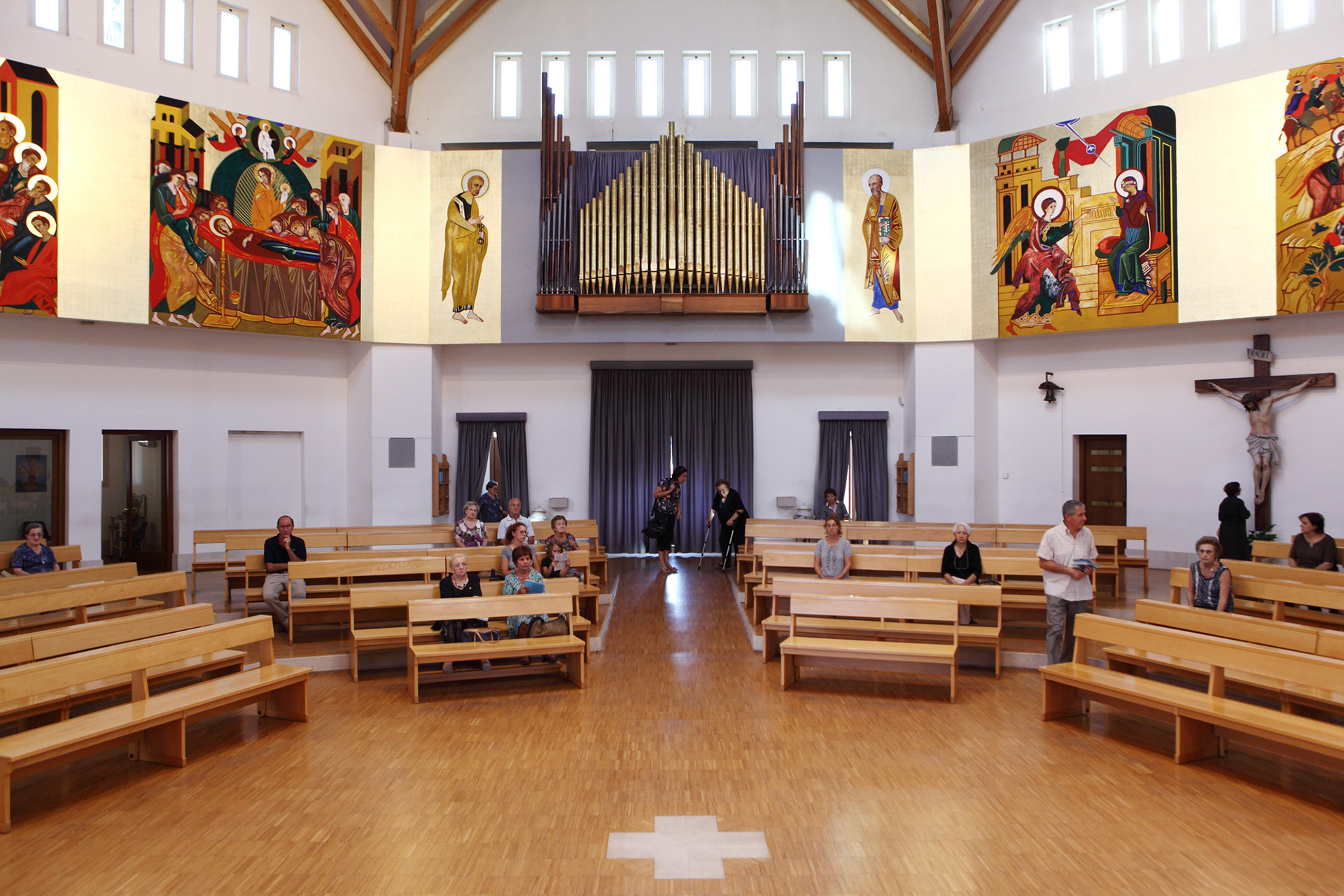
San Giovanni Battista in Ferro di cavallo's church, Perugia, Saturday 5:59 pm.
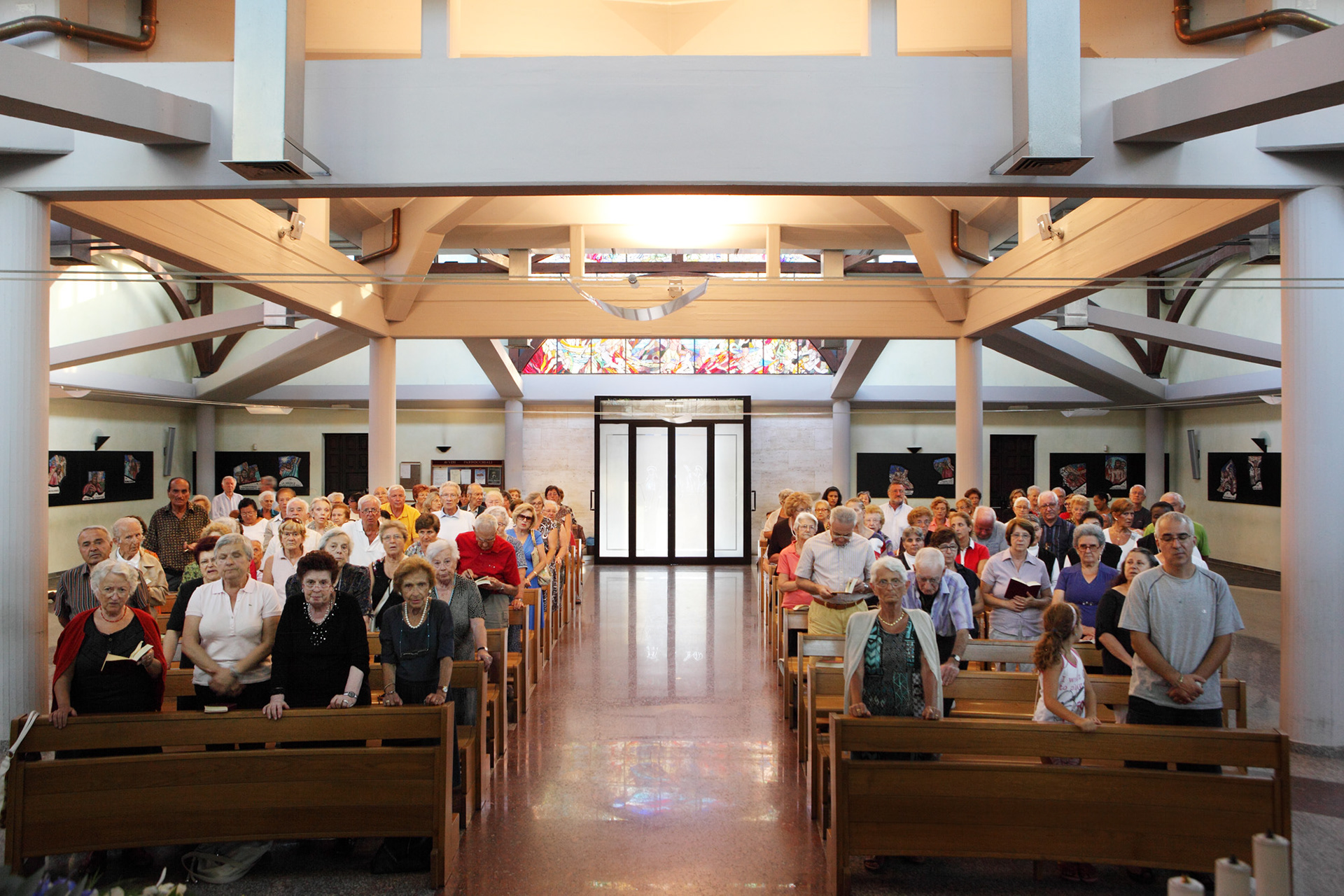
Cuore Immacolato di Maria's church, Silvi Marina, Tuesday 6:55 pm.
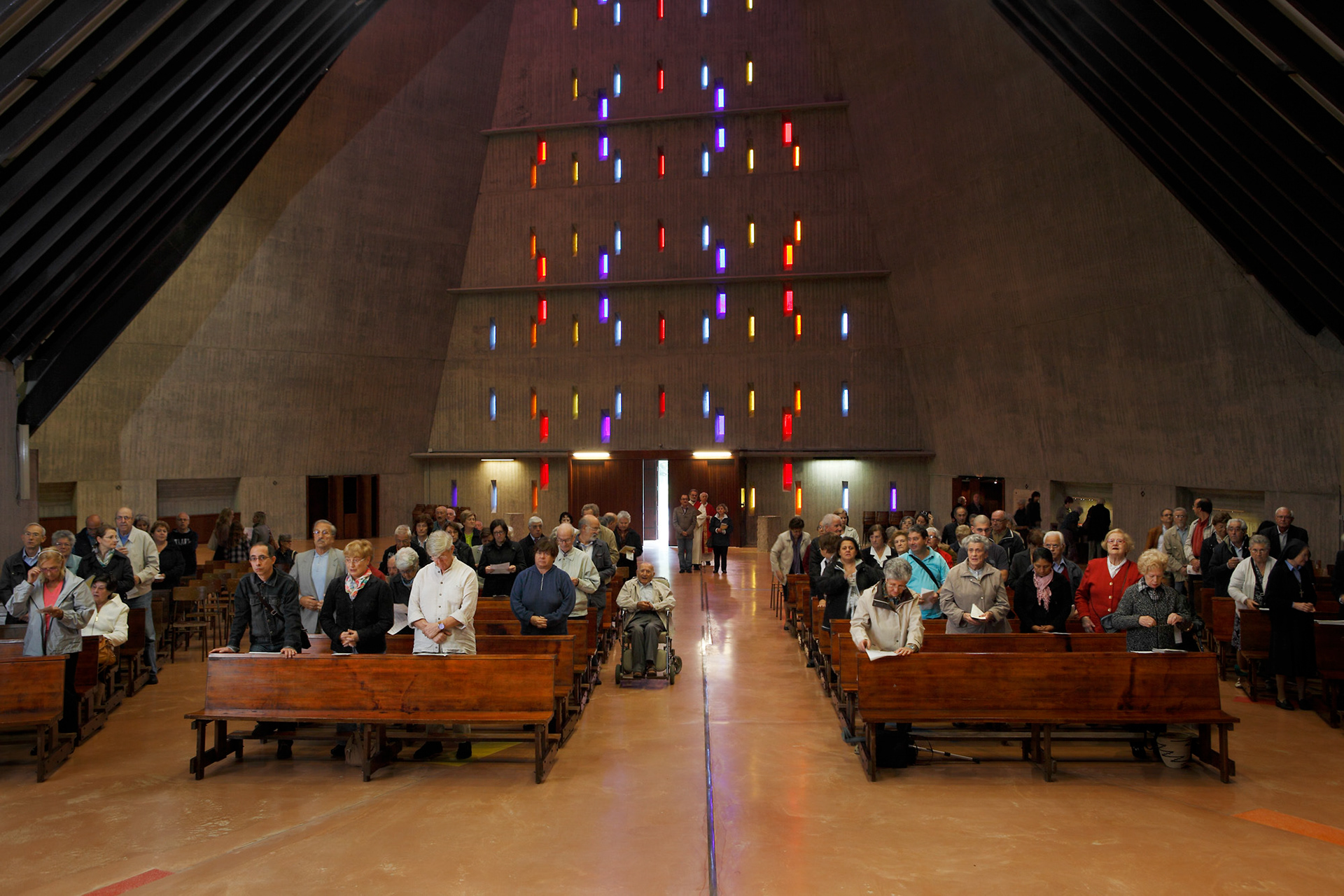
San Giovanni Bono's church, Milano, Sunday 10:30 am.
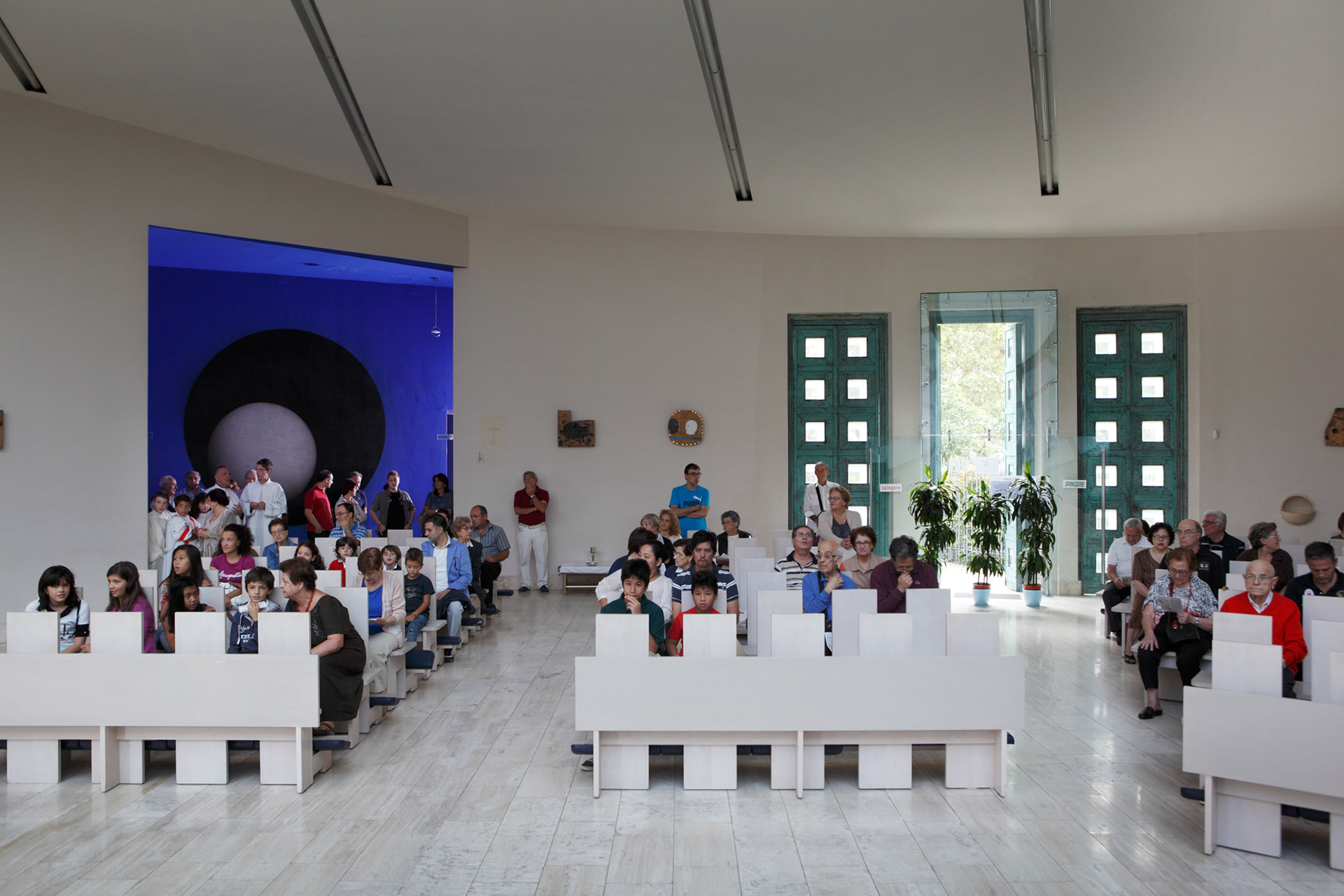
Santo Volto di Gesù's church, Roma, Sunday 9:49 am.
Santissimo Redentore's church, Seriate, Sunday 11:03 am.
Santa Maria al Romito's church, Pontedera, Sunday 11:30 am.
The new vision of the priest is vital in our identification within our photographic project. In fact, we place the camera in front of the altar - as if it replaces the priest's gaze - pointed towards the church entrance framing the churchgoers, those present at the ceremony.
Photography is then the synthesis.
Photography is then the synthesis.
Madonna della Speranza's church, Gallarate, Saturday 6:02 pm.